mmcartalk
Expert
- Messages
- 4,157
- Reactions
- 2,675
MM Retro-Write-Up: 1969 Mercury Cyclone CJ
IN A NUTSHELL: Not very popular on the street, but a real beast on the track.
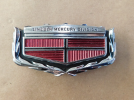
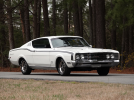
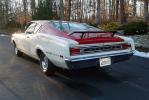
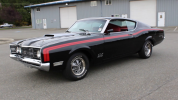
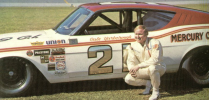
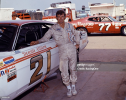
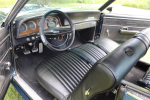


Having started in earnest with the introduction of the 1964 Pontiac GTO (although, to some extent, also with the earlier 1955 Chrysler 300 and early-60s Chevy Impala SS), the Muscle-Car craze in the U.S. reached its peak in the mid-1960s to around 1970….just the years I was in high-school. The mid-sized GTO, Chevy Chevelle SS, Ford Fairlane/Torino GT, Plymouth Road Runner, and Dodge Coronet/Super-Bee/Charger R/T were to be seen everywhere back then (along with some compact and full-size muscle-cars). However, the Oldsmobile 4-4-2, Buick GS 350/400, and Mercury Cyclone, although potent machines, were much less popular at the time as youth-oriented performance-cars…perhaps because they were marketed and sold at dealerships that typically had an older, more conservative customer-base than those of the cheaper, high-volume brands.
For this write-up, I’m going to zero in on the Cyclone, primarily because, unlike its mid-priced GM competition, it, along with its sister Ford Torino GT, was not only a tire-burner on the street, but a real powerhouse on the NASCAR tracks of the period as well. Among many other drivers, Donny Allison and Carl Yarborough racked up a number of wins and high-place finishes on the tracks in Cyclones. Since GM, at the time, refused any factory-backing of organized racing (which effectively kept the Chevelles and GTOs off the tracks), the primary competition on the tracks for the Torinos and Cyclones in 1969 and 1970 was, of course, the Plymouth Road Runner Superbird and Dodge Charger Daytona, with their dramatic wedge-shaped noses and high trunk-mounted wings. Richard Petty was the best-known Plymouth driver at the time, and his bright-blue #43 was usually running right up there with the Torinos and Cyclones. A very limited-edition Cale-Yarborough Cyclone-Special for the street was done…only 41 were built. And Donny Allison’s Cyclone (shown below in the 1970 version) was done as a model kit.
https://www.legendarycollectorcars.c...oogle_vignette
https://www.scalemates.com/kits/mpc-...rcury--1123274
The basic platform for the Cyclone (and its origin), of course, was Mercury’s 1960s mid-size Comet coupe/sedan, later known as Montego, with their straight-six and lower-displacement V8 engines. A major redesign occurred in 1968, and the name Montego was added…although the “Cyclone” trim level had already been used before for the Comet. The Comet name was dropped for 1968, and the Cyclone (the name Cyclone means “Storm”), that year, set a new NASCAR speed record of 189 MPH….which would be met or exceeded when Dodge and Plymouth introduced the wing-equipped Superbird and Daytona Charger the following year.
On the street, as with equivalent Ford Torinos, Cyclones in 1969 could be ordered with a 5.0L V8 (302 c.i) V8, a 5.7L V8 (351 c.i.), a GT version with a 6.4L V8 (390 c.i.)…which was one of my favorite Ford engines of the period…..and the top-level CJ (Cobra-Jet) version with a 7.0L V8. Ford and Mercury rated this engine at 335 HP and 445 ft.lbs. of torque, but that was clearly a conservative number, probably done for insurance purposes. Equivalent sized dual-quad-carb Dodge/Plymouth Hemis of the time were rated at 425 HP and 490 ft.-lbs. of torque, and insurance premiums were already starting to limit their sales. All of these models, of course, could also be had with the famous Hurst 4-speed manual transmissions and the “T” shift-handles. And, with Thrush and Glasspak mufflers, you could hear them a mile away LOL.
Personally, although I generally preferred the GM competition because I thought their interiors, fit/finish, bodywork by Fisher, materials, and attention to detail were the best in the American car industry at the time, the Fords had better paint-quality and MUCH better brakes….GM used acrylic-lacquer paint that was utter garbage, and you could not beat the Ford power front-disc/drum combination at the time for stopping-power, even when GM and Chrysler finally got around to disc brakes. Ford, however, at the time, only offered front discs on V8-equipped-vehicles…..you could not get them on sixes. I also thought that the fastback 1968/69 versions of the Torino and Cyclone were beautiful-looking in the styling department…the 1970 redesign looked more awkward.
I never knew anyone that actually owned a Cyclone CJ, but an high-school classmate had a bright red 1969 Ford Torino GT with white interior and pinstripes, which was similar in a number of ways, and I got to ride in it a few times and sample it once. Also got a chance to sample a few other muscle-cars of the time…..two different Pontiac GTOs, a blue Road-Runner owned by a neighbor of mine who was a cop, and a few others here and there, but I was never really much of fan of aggressive-driving (still am not even today), and, even when I sampled them and punched the right pedal, did not overdo it, and drove responsively. Too bad that a lot of my high-school friends didn’t…….some of them did not live to even regret the experience.
Even though I wasn’t into a lot of aggressive driving myself, I still liked most of the muscle-cars of the period for their flamboyant paint jobs, graphics, body-fairings, and dramatic appearances. I was sorry to see them decline and fade out in the 1970s as the industry was transformed by new regulations, gas-shortages, emasculated engines that barely ran at al sometimes, CAFE requirements, and ugly safety-bumpers. Of course, new eras also produced new improvements as well (such as electronic engine controls), but the 1970s, for the richly deserved the “Malaise” reputation it got in the auto industry.
And, as Always, Happy Vehicle-Memories.
MM
__________________
DRIVING IS BELIEVING
IN A NUTSHELL: Not very popular on the street, but a real beast on the track.









Having started in earnest with the introduction of the 1964 Pontiac GTO (although, to some extent, also with the earlier 1955 Chrysler 300 and early-60s Chevy Impala SS), the Muscle-Car craze in the U.S. reached its peak in the mid-1960s to around 1970….just the years I was in high-school. The mid-sized GTO, Chevy Chevelle SS, Ford Fairlane/Torino GT, Plymouth Road Runner, and Dodge Coronet/Super-Bee/Charger R/T were to be seen everywhere back then (along with some compact and full-size muscle-cars). However, the Oldsmobile 4-4-2, Buick GS 350/400, and Mercury Cyclone, although potent machines, were much less popular at the time as youth-oriented performance-cars…perhaps because they were marketed and sold at dealerships that typically had an older, more conservative customer-base than those of the cheaper, high-volume brands.
For this write-up, I’m going to zero in on the Cyclone, primarily because, unlike its mid-priced GM competition, it, along with its sister Ford Torino GT, was not only a tire-burner on the street, but a real powerhouse on the NASCAR tracks of the period as well. Among many other drivers, Donny Allison and Carl Yarborough racked up a number of wins and high-place finishes on the tracks in Cyclones. Since GM, at the time, refused any factory-backing of organized racing (which effectively kept the Chevelles and GTOs off the tracks), the primary competition on the tracks for the Torinos and Cyclones in 1969 and 1970 was, of course, the Plymouth Road Runner Superbird and Dodge Charger Daytona, with their dramatic wedge-shaped noses and high trunk-mounted wings. Richard Petty was the best-known Plymouth driver at the time, and his bright-blue #43 was usually running right up there with the Torinos and Cyclones. A very limited-edition Cale-Yarborough Cyclone-Special for the street was done…only 41 were built. And Donny Allison’s Cyclone (shown below in the 1970 version) was done as a model kit.
https://www.legendarycollectorcars.c...oogle_vignette
https://www.scalemates.com/kits/mpc-...rcury--1123274
The basic platform for the Cyclone (and its origin), of course, was Mercury’s 1960s mid-size Comet coupe/sedan, later known as Montego, with their straight-six and lower-displacement V8 engines. A major redesign occurred in 1968, and the name Montego was added…although the “Cyclone” trim level had already been used before for the Comet. The Comet name was dropped for 1968, and the Cyclone (the name Cyclone means “Storm”), that year, set a new NASCAR speed record of 189 MPH….which would be met or exceeded when Dodge and Plymouth introduced the wing-equipped Superbird and Daytona Charger the following year.
On the street, as with equivalent Ford Torinos, Cyclones in 1969 could be ordered with a 5.0L V8 (302 c.i) V8, a 5.7L V8 (351 c.i.), a GT version with a 6.4L V8 (390 c.i.)…which was one of my favorite Ford engines of the period…..and the top-level CJ (Cobra-Jet) version with a 7.0L V8. Ford and Mercury rated this engine at 335 HP and 445 ft.lbs. of torque, but that was clearly a conservative number, probably done for insurance purposes. Equivalent sized dual-quad-carb Dodge/Plymouth Hemis of the time were rated at 425 HP and 490 ft.-lbs. of torque, and insurance premiums were already starting to limit their sales. All of these models, of course, could also be had with the famous Hurst 4-speed manual transmissions and the “T” shift-handles. And, with Thrush and Glasspak mufflers, you could hear them a mile away LOL.
Personally, although I generally preferred the GM competition because I thought their interiors, fit/finish, bodywork by Fisher, materials, and attention to detail were the best in the American car industry at the time, the Fords had better paint-quality and MUCH better brakes….GM used acrylic-lacquer paint that was utter garbage, and you could not beat the Ford power front-disc/drum combination at the time for stopping-power, even when GM and Chrysler finally got around to disc brakes. Ford, however, at the time, only offered front discs on V8-equipped-vehicles…..you could not get them on sixes. I also thought that the fastback 1968/69 versions of the Torino and Cyclone were beautiful-looking in the styling department…the 1970 redesign looked more awkward.
I never knew anyone that actually owned a Cyclone CJ, but an high-school classmate had a bright red 1969 Ford Torino GT with white interior and pinstripes, which was similar in a number of ways, and I got to ride in it a few times and sample it once. Also got a chance to sample a few other muscle-cars of the time…..two different Pontiac GTOs, a blue Road-Runner owned by a neighbor of mine who was a cop, and a few others here and there, but I was never really much of fan of aggressive-driving (still am not even today), and, even when I sampled them and punched the right pedal, did not overdo it, and drove responsively. Too bad that a lot of my high-school friends didn’t…….some of them did not live to even regret the experience.
Even though I wasn’t into a lot of aggressive driving myself, I still liked most of the muscle-cars of the period for their flamboyant paint jobs, graphics, body-fairings, and dramatic appearances. I was sorry to see them decline and fade out in the 1970s as the industry was transformed by new regulations, gas-shortages, emasculated engines that barely ran at al sometimes, CAFE requirements, and ugly safety-bumpers. Of course, new eras also produced new improvements as well (such as electronic engine controls), but the 1970s, for the richly deserved the “Malaise” reputation it got in the auto industry.
And, as Always, Happy Vehicle-Memories.
MM
__________________
DRIVING IS BELIEVING
